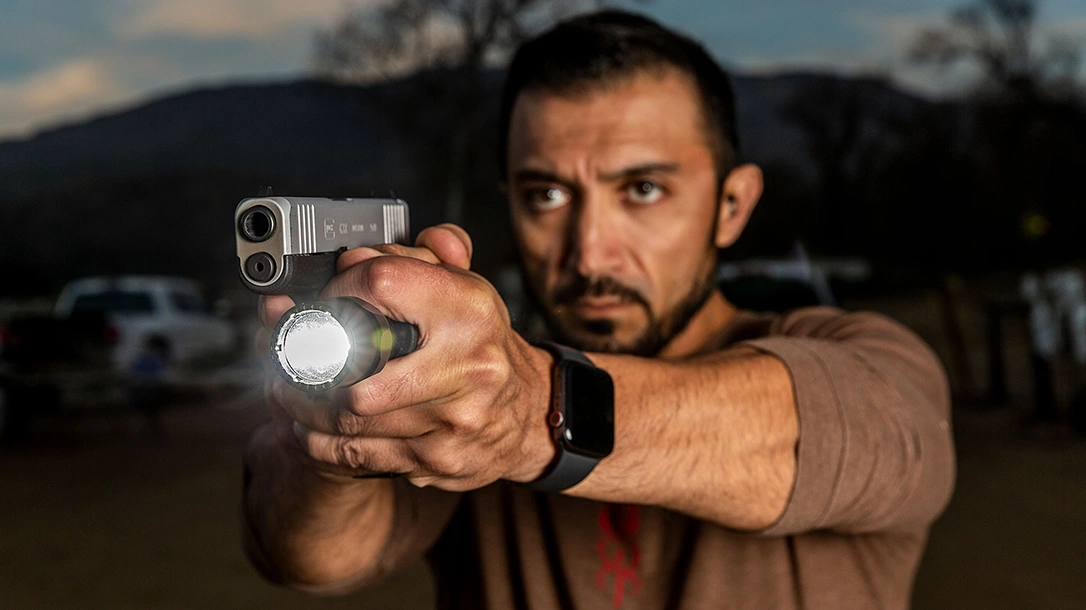Low-light environments present unique challenges. So, various flashlight techniques have been developed for use with a handgun. While many readers are familiar with the Harries Flashlight Technique, the Rogers/SureFire Technique often remains underappreciated or misunderstood. In this article we’ll revisit the Rogers/SureFire Technique, addressing common misconceptions and discussing its effectiveness in low-light shooting situations.
Rogers/SureFire Technique
The Rogers/SureFire® Technique is a method for using a flashlight in conjunction with a handgun that offers enhanced stability and control in low-light situations. It was developed by Bill Rogers, a former FBI agent, world-ranked IPSC shooter, and renowned firearms instructor. This technique leverages the advancements in small tactical flashlights to provide an effective and stable shooting grip.
Rogers saw a need for a method that allows shooters to maintain a two-handed grip on their firearm while using a flashlight. Traditional methods, such as the popular Harries Flashlight Technique, required holding the flashlight in one hand and the firearm in the other. This could compromise accuracy and control. The Rogers/SureFire Technique was created to address this.
Advertisement — Continue Reading Below
The Harries Flashlight Technique
The Harries Flashlight Technique is widely taught and is still the dominant technique. It was originally developed in the early 1970s by Michael Harries, an accomplished South West Combat Pistol League shooter, for use with the large-bodied police flashlights of the era.
The flashlight is held in an ice pick grip, with your thumb or finger operating the switch. The support hand crosses under the shooting hand, pressing the backs of both hands together to create stabilizing isometric tension.
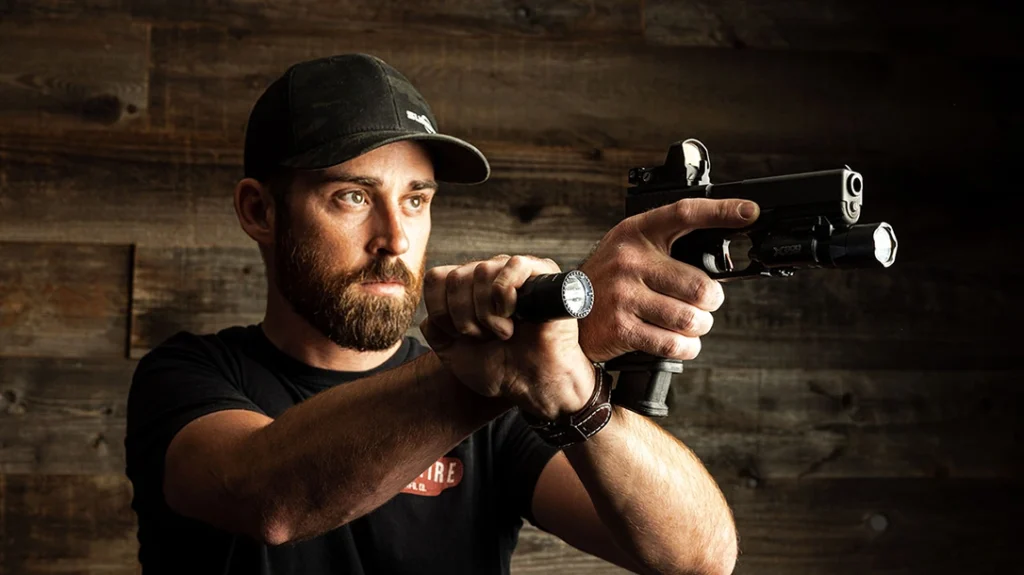
Advertisement — Continue Reading Below
This technique was embraced by renowned firearms instructor Col. Jeff Cooper, founder of the American Pistol Institute (later the Gunsite Academy). His endorsement helped popularize it.
The Harries Technique is particularly well-suited for use with the Weaver Stance, of which Michael Harries was a proponent. However, it can also be used with the Isosceles Stance. The Weaver Stance involves blading your body to the threat with your shooting arm extended and your support arm bent, with the elbow oriented downward. The Harries Technique complements this stance.
Jeff Cooper was also a proponent of the Weaver Stance and made it one of the foundations of his “Modern Technique” of pistol shooting.
Advertisement — Continue Reading Below
Details of the Rogers/SureFire Technique
In contrast, the Rogers/SureFire Technique is primarily designed to be compatible with the Isosceles Stance. However, it can also be adapted for use with the Weaver Stance. The Rogers/SureFire Technique involves holding the flashlight between the index and middle fingers of your support hand.
This unique grip allows you to maintain a two-handed hold on your firearm, using the remaining three fingers of the support hand to stabilize the weapon. This significantly enhances accuracy and control. The flashlight is activated using the base of the thumb for quick and easy operation.
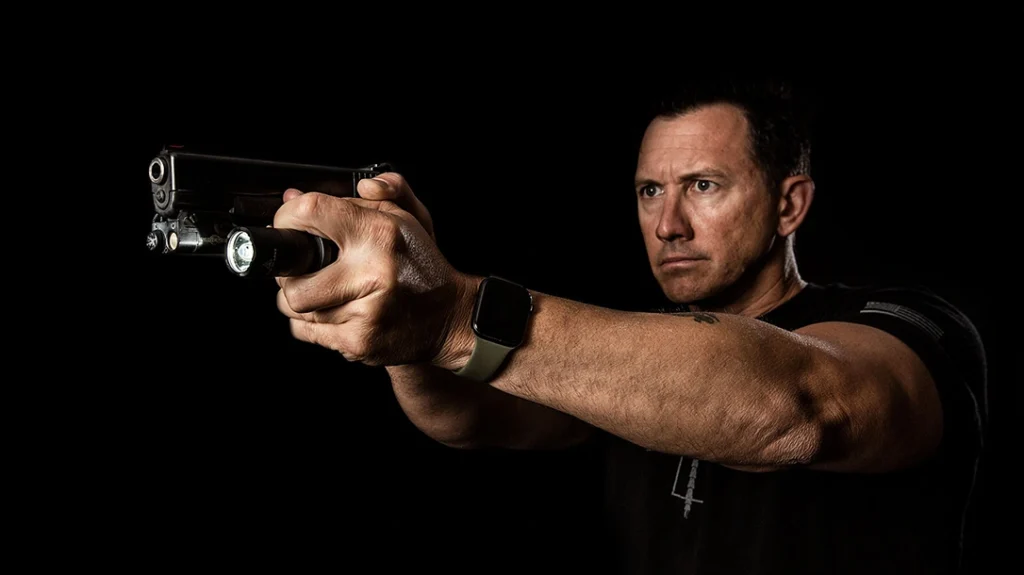
Advertisement — Continue Reading Below
Your support hand can also be used for other tasks without losing control of the flashlight. It should be noted that this can also be achieved with a small flashlight held in the Harries Technique grip. This capability is particularly valuable in dynamic environments where multitasking is often required.
Likewise, it enables a quick return to a shooting stance if needed, ensuring a high level of readiness and that you’re always prepared to respond to threats. Both grips are compatible with the Modified FBI Technique and the Neck Index Technique.
Common Misconceptions
There are several common misconceptions about the Rogers/SureFire Technique. One major misconception is that any flashlight will suffice. However, the Rogers/SureFire Technique is specifically designed for use with small tactical flashlights that feature an exposed rear button tailcap switch.
Advertisement — Continue Reading Below
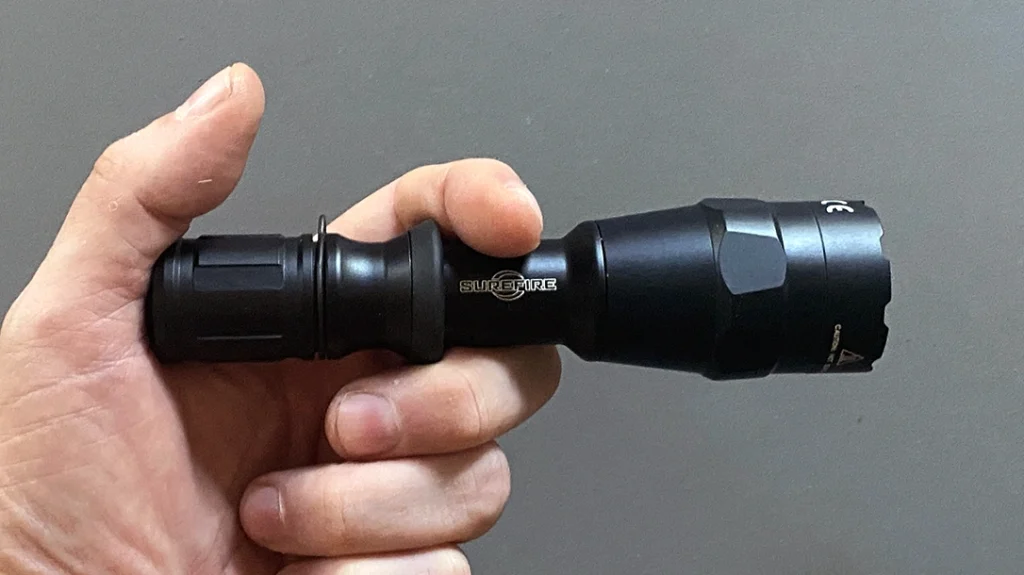
These flashlights are typically lightweight, easy to grip, and simple to manipulate. Using this technique with flashlights that have a shrouded, crowned, or recessed tailcap switch or those lacking a grip ring can be quite challenging.
Another common misconception is that the Rogers/SureFire Technique is difficult to learn. It does require practice. However, like any skill, with proper training, it can be mastered and become an invaluable tool for low-light shooting situations.
Advertisement — Continue Reading Below
Additionally, some proponents mistakenly believe that the Rogers/SureFire Technique is the only technique you’ll ever need. It is extremely effective and considered by many experienced trainers to be the best technique ever developed for using a hand-held flashlight with a handgun. However, it’s crucial to be familiar with multiple flashlight techniques.
Different circumstances will dictate the most appropriate method to use. Every technique has its limitations.
Mastering the Technique
When using the Rogers/SureFire Technique, ensure that the flashlight is securely held between your support hand’s index and middle fingers. A loose grip can cause the flashlight to slip, compromising your control.
Advertisement — Continue Reading Below
The flashlight should be activated using the base of your thumb. Incorrect thumb placement can make it difficult to quickly turn the flashlight on/off, which is crucial in tactical situations.
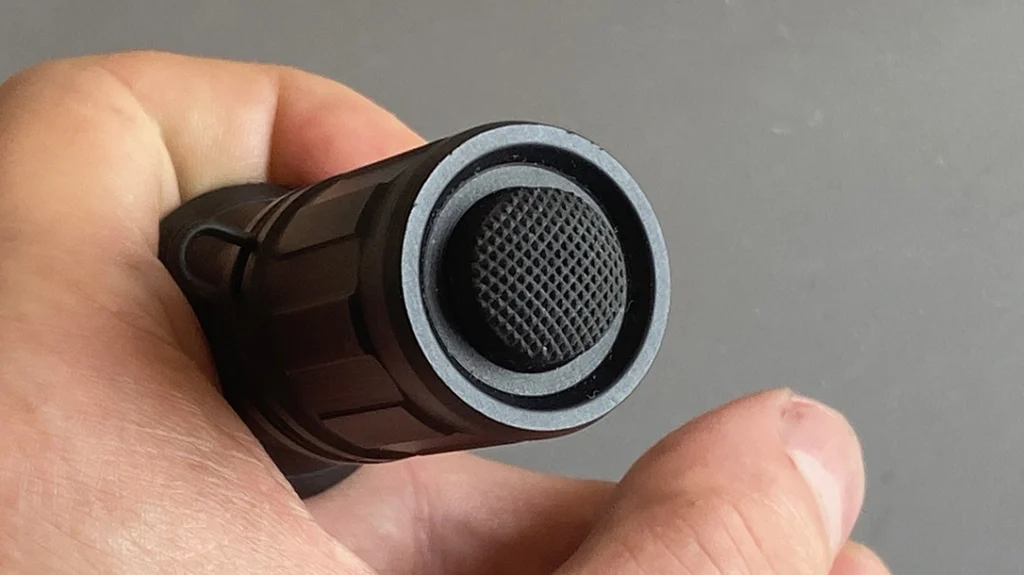
Regular practice helps develop what’s commonly referred to as “muscle memory,” consolidating a specific motor task into memory through repetition. So, incorporate different scenarios and tasks into your practice.
Advertisement — Continue Reading Below
Practice using your support hand for other tasks while maintaining control of the flashlight—opening doors, clearing your cover garments, drawing your firearm, reloading, clearing malfunctions, etc. Train in different lighting conditions and environments to ensure that you can effectively use the technique in any situation.
Live fire training is crucial for developing real-world shooting skills. However, using inert training guns, such as ASP Red Guns®, is a great way to practice flashlight techniques. They allow you to focus on mastering the mechanics of these techniques without the risk associated with live firearms. They also allow you to train in places you couldn’t train with live firearms.
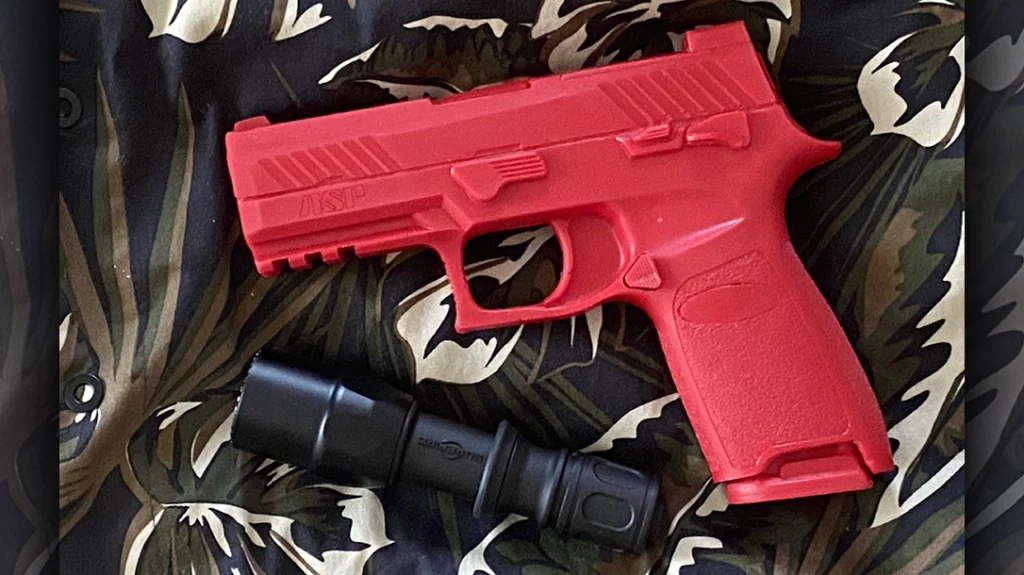
Seeking feedback from experienced peers or instructors can provide valuable insights and identify areas for improvement. Participate in training sessions or workshops where you can practice the technique under professional guidance.
Finally, engaging in simulated scenarios that mimic real-life situations helps you understand how well you can apply the technique under stress and in dynamic environments.
Final Thoughts
The Rogers/SureFire Technique is an effective method to enhance your low-light shooting skills. However, it’s important to explore and practice various techniques to ensure you are well-prepared for any scenario.
Flashlights optimized for compatibility with the Rogers/SureFire Technique are available. The SureFire® flashlight models with the patented CombatGrip® are the gold standard in this regard.
Another outstanding flashlight in this category is the Haley Strategic Partners D3FT Combat Flashlight. It was designed by Travis Haley and manufactured by SureFire for Haley Strategic.
There are other options, too, such as the Thyrm® SwitchBack®. Now in its second generation, it attaches between the body and the tailcap of many popular tactical flashlights. It adds a finger loop that allows for a more secure grip and easier manipulation.
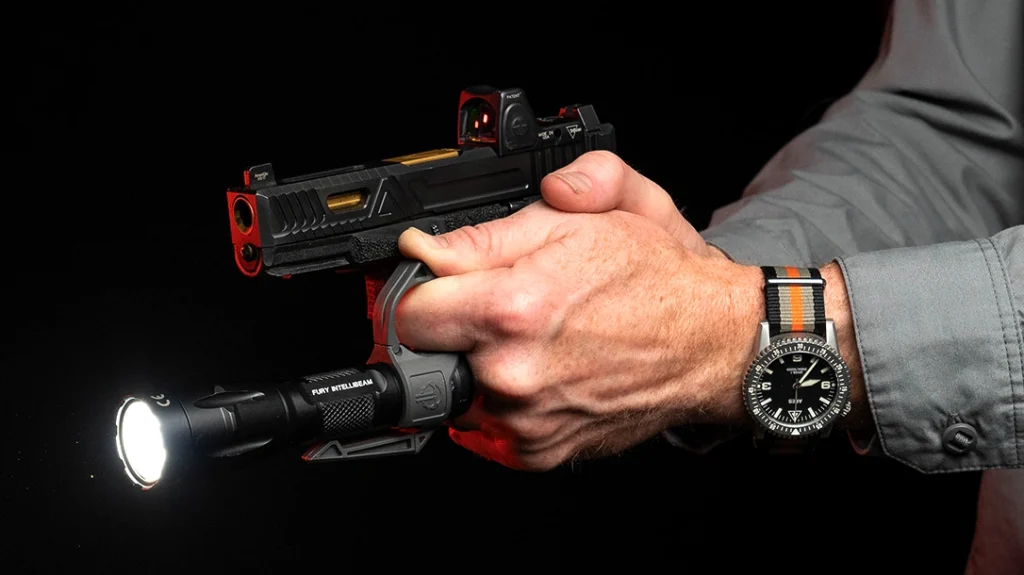
Developed in collaboration with Chris Costa of Costa Ludus, it enables users to maintain a two-handed grip on their handgun while simultaneously operating the flashlight using the SwitchBack Technique.
For more information, please visit SureFire.com, HaleyStrategic.com, ASP-USA.com, and Thyrm.com.
